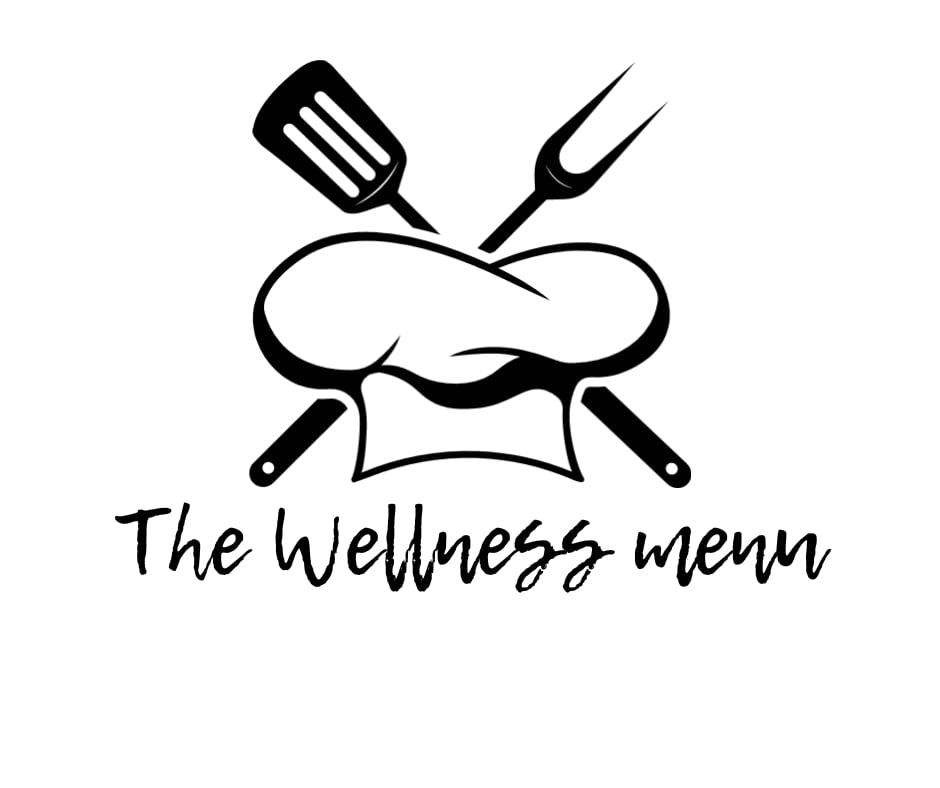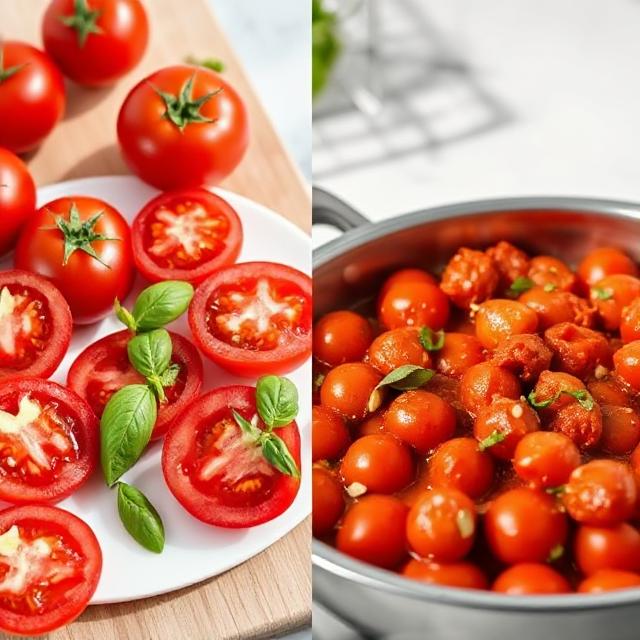
Raw vs. Cooked Tomatoes: The Truth About Nutrition and Lycopene Absorption

Tomatoes are often celebrated as one of the healthiest foods in the produce aisle. Packed with antioxidants, vitamins, and flavor, they’re a staple in many diets around the world. But a common belief persists: that raw tomatoes are more nutritious than cooked ones. While this might seem logical—after all, fresh foods are often associated with higher nutrient content—the truth is more nuanced. When it comes to tomatoes, cooking actually unlocks some of their most powerful health benefits, particularly lycopene, a potent antioxidant linked to cancer prevention and heart health.
Understanding Lycopene: The Star Antioxidant in Tomatoes
Lycopene is a naturally occurring carotenoid that gives tomatoes their vibrant red color. It is one of the most studied antioxidants due to its powerful health-promoting properties. Numerous studies have linked higher lycopene intake with a reduced risk of several types of cancer, including prostate, lung, and stomach cancer, as well as improved cardiovascular health and protection against oxidative stress. But there’s a catch—our bodies struggle to absorb lycopene from raw tomatoes.
Why Raw Tomatoes Fall Short
Raw tomatoes have tough cellular walls that encase their nutrients, including lycopene. These rigid structures are made of insoluble fibers that are not easily broken down by the human digestive system. As a result, much of the lycopene in raw tomatoes passes through the digestive tract without being absorbed. Even though raw tomatoes contain more vitamin C, a heat-sensitive nutrient, their bioavailability of lycopene is relatively low.
The Power of Cooking: Unlocking Lycopene’s Potential
Cooking tomatoes breaks down their cellular walls, releasing lycopene and making it more bioavailable. Heat changes the molecular structure of lycopene from its natural trans form to a cis form, which is much easier for the body to absorb. This means that when you simmer, roast, or sauté tomatoes, you’re actually enhancing one of their key health benefits.
Tomato sauce, tomato paste, roasted tomatoes, and even ketchup (when made without excessive sugar or preservatives) are rich sources of easily absorbed lycopene. A study published in the Journal of Agriculture and Food Chemistry found that cooking tomatoes for 30 minutes at 190°F increased lycopene levels by over 35% while only slightly reducing vitamin C.
Tomato Cooking Methods That Maximize Benefits
To get the most out of your tomatoes, opt for cooking methods that retain flavor and nutrients:
- Roasting: Enhances the sweetness and concentrates lycopene without excessive water loss.
- Simmering into sauces: Ideal for long, slow cooking, which softens fibers and deepens flavor.
- Sautéing with olive oil: The healthy fats in olive oil further enhance the absorption of lycopene, a fat-soluble compound.
- Steaming or baking: Gentle heat preserves some vitamin C while still breaking down cell walls.
Raw Isn’t Bad—Just Different
This isn’t to say that raw tomatoes have no benefits. They are still excellent sources of vitamin C, potassium, folate, and fiber. They also have a lower calorie density and are hydrating due to their high water content. Raw tomatoes are a refreshing, nutrient-dense food—just not the best source of lycopene.
Lycopene and Disease Prevention
The health implications of lycopene absorption are significant. Research has shown that higher levels of bioavailable lycopene in the blood are linked to lower risks of:
- Prostate cancer: Lycopene helps inhibit the growth of prostate cancer cells.
- Cardiovascular disease: It reduces oxidative damage to LDL cholesterol and supports arterial health.
- Eye health: Lycopene may help protect against age-related macular degeneration.
- Sun damage protection: It offers a degree of natural sun protection by neutralizing free radicals generated by UV exposure.
The Mediterranean Secret
The Mediterranean diet, renowned for its heart-healthy effects, includes many cooked tomato products like sauces, soups, and stews. Paired with olive oil, herbs, and other vegetables, this diet naturally enhances lycopene absorption and demonstrates how traditional food practices often align with modern nutritional science.
Tips for Including More Cooked Tomatoes in Your Diet
- Make homemade tomato sauces and soups in bulk and freeze for later use.
- Add diced tomatoes to stews, casseroles, and grain bowls.
- Roast cherry tomatoes with garlic and herbs for a flavorful side dish.
- Make your own salsa or chutney with cooked tomatoes and spices.
- Blend roasted tomatoes into salad dressings and dips.
Conclusion: Cooked for a Cause
The idea that raw tomatoes are superior in nutrition is a persistent myth, but science tells a more complete story. Cooking tomatoes doesn’t destroy their health benefits—it transforms and enhances them, particularly when it comes to lycopene. While raw tomatoes still offer valuable nutrients, including them in both raw and cooked forms ensures a broader range of health benefits. By embracing cooked tomatoes, we not only improve nutrient absorption but also add rich flavor and depth to our meals. So next time you’re preparing dinner, don’t shy away from that simmering tomato sauce—it might just be one of the healthiest choices on your plate.
Recommended Recipes
Raw vs. Cooked Tomatoes: The Truth About Nutrition and Lycopene Absorption


Kirsten Hamilton
Tomatoes are often celebrated as one of the healthiest foods in the produce aisle. Packed with antioxidants, vitamins, and flavor, they’re a staple in many diets around the world. But a common belief persists: that raw tomatoes are more nutritious than cooked ones. While this might seem logical—after all, fresh foods are often associated with higher nutrient content—the truth is more nuanced. When it comes to tomatoes, cooking actually unlocks some of their most powerful health benefits, particularly lycopene, a potent antioxidant linked to cancer prevention and heart health.
Understanding Lycopene: The Star Antioxidant in Tomatoes
Lycopene is a naturally occurring carotenoid that gives tomatoes their vibrant red color. It is one of the most studied antioxidants due to its powerful health-promoting properties. Numerous studies have linked higher lycopene intake with a reduced risk of several types of cancer, including prostate, lung, and stomach cancer, as well as improved cardiovascular health and protection against oxidative stress. But there’s a catch—our bodies struggle to absorb lycopene from raw tomatoes.
Why Raw Tomatoes Fall Short
Raw tomatoes have tough cellular walls that encase their nutrients, including lycopene. These rigid structures are made of insoluble fibers that are not easily broken down by the human digestive system. As a result, much of the lycopene in raw tomatoes passes through the digestive tract without being absorbed. Even though raw tomatoes contain more vitamin C, a heat-sensitive nutrient, their bioavailability of lycopene is relatively low.
The Power of Cooking: Unlocking Lycopene’s Potential
Cooking tomatoes breaks down their cellular walls, releasing lycopene and making it more bioavailable. Heat changes the molecular structure of lycopene from its natural trans form to a cis form, which is much easier for the body to absorb. This means that when you simmer, roast, or sauté tomatoes, you’re actually enhancing one of their key health benefits.
Tomato sauce, tomato paste, roasted tomatoes, and even ketchup (when made without excessive sugar or preservatives) are rich sources of easily absorbed lycopene. A study published in the Journal of Agriculture and Food Chemistry found that cooking tomatoes for 30 minutes at 190°F increased lycopene levels by over 35% while only slightly reducing vitamin C.
Tomato Cooking Methods That Maximize Benefits
To get the most out of your tomatoes, opt for cooking methods that retain flavor and nutrients:
- Roasting: Enhances the sweetness and concentrates lycopene without excessive water loss.
- Simmering into sauces: Ideal for long, slow cooking, which softens fibers and deepens flavor.
- Sautéing with olive oil: The healthy fats in olive oil further enhance the absorption of lycopene, a fat-soluble compound.
- Steaming or baking: Gentle heat preserves some vitamin C while still breaking down cell walls.
Raw Isn’t Bad—Just Different
This isn’t to say that raw tomatoes have no benefits. They are still excellent sources of vitamin C, potassium, folate, and fiber. They also have a lower calorie density and are hydrating due to their high water content. Raw tomatoes are a refreshing, nutrient-dense food—just not the best source of lycopene.
Lycopene and Disease Prevention
The health implications of lycopene absorption are significant. Research has shown that higher levels of bioavailable lycopene in the blood are linked to lower risks of:
- Prostate cancer: Lycopene helps inhibit the growth of prostate cancer cells.
- Cardiovascular disease: It reduces oxidative damage to LDL cholesterol and supports arterial health.
- Eye health: Lycopene may help protect against age-related macular degeneration.
- Sun damage protection: It offers a degree of natural sun protection by neutralizing free radicals generated by UV exposure.
The Mediterranean Secret
The Mediterranean diet, renowned for its heart-healthy effects, includes many cooked tomato products like sauces, soups, and stews. Paired with olive oil, herbs, and other vegetables, this diet naturally enhances lycopene absorption and demonstrates how traditional food practices often align with modern nutritional science.
Tips for Including More Cooked Tomatoes in Your Diet
- Make homemade tomato sauces and soups in bulk and freeze for later use.
- Add diced tomatoes to stews, casseroles, and grain bowls.
- Roast cherry tomatoes with garlic and herbs for a flavorful side dish.
- Make your own salsa or chutney with cooked tomatoes and spices.
- Blend roasted tomatoes into salad dressings and dips.
Conclusion: Cooked for a Cause
The idea that raw tomatoes are superior in nutrition is a persistent myth, but science tells a more complete story. Cooking tomatoes doesn’t destroy their health benefits—it transforms and enhances them, particularly when it comes to lycopene. While raw tomatoes still offer valuable nutrients, including them in both raw and cooked forms ensures a broader range of health benefits. By embracing cooked tomatoes, we not only improve nutrient absorption but also add rich flavor and depth to our meals. So next time you’re preparing dinner, don’t shy away from that simmering tomato sauce—it might just be one of the healthiest choices on your plate.

The Wellness Menu values your privacy and keeps your personal information secure. We use your data only to provide and improve our services and never share it with third parties unless required by law. By using our website, you agree to this policy.






GIPHY App Key not set. Please check settings